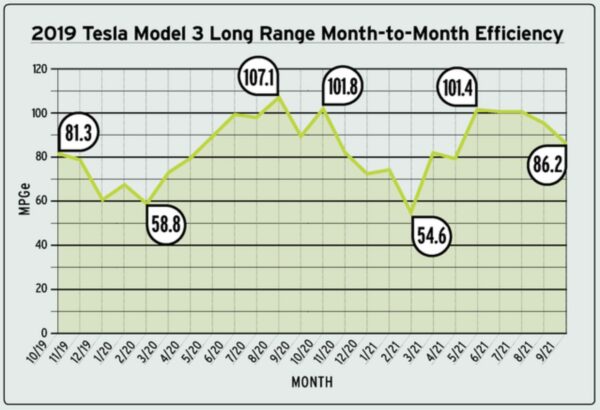
Tesla Model 3 Efficiency Tracked Over Two Years and 40,000 Miles

Photo: Car and Driver
After two years of driving a 2019 Tesla Model 3 around Michigan, Car and Driver found that the EV’s efficiency varied significantly from month to month — largely depending on the temperature outside, based on stats from third-party software TeslaFi.
Delivered to the team’s Ann Arbor, Michigan headquarters in 2019, the Model 3 was expected to endure all four seasons during the test — and it did.
In the test, which accounted for around 40,000 miles driven, the publication found that the car’s average MPGe was at 81 to start, with the worst month overall seeing a low of just 55 MPGe amidst 27-degree average temperatures.
Tesla Explains ‘Cold Weather Best Practices’ with In-Car Message https://t.co/KRXTOnT4cz
— TeslaNorth.com (@RealTeslaNorth) January 9, 2022
Though the vehicle’s efficiency dropped almost immediately, it tended to average around 59 MPGe over 1,075 miles of driving, representing just 48 percent of the EPA’s initial combined rating.
When parked in cold weather, battery drain also remained an issue, though keeping a cabin warm with no other functionality was possible. Cold winter weather affects batteries in general and EVs are no exception.
In a separate test, the team found that the Model 3 could keep the cabin at 65 degrees for 45.1 hours in sub-freezing temperatures.
Tesla’s Model Y and Model 3 have dominated EV sales in Q1 in the U.S., and are expected to ramp up higher based on the automaker’s growth guidance of increasing deliveries by over 50% year-over-year.

